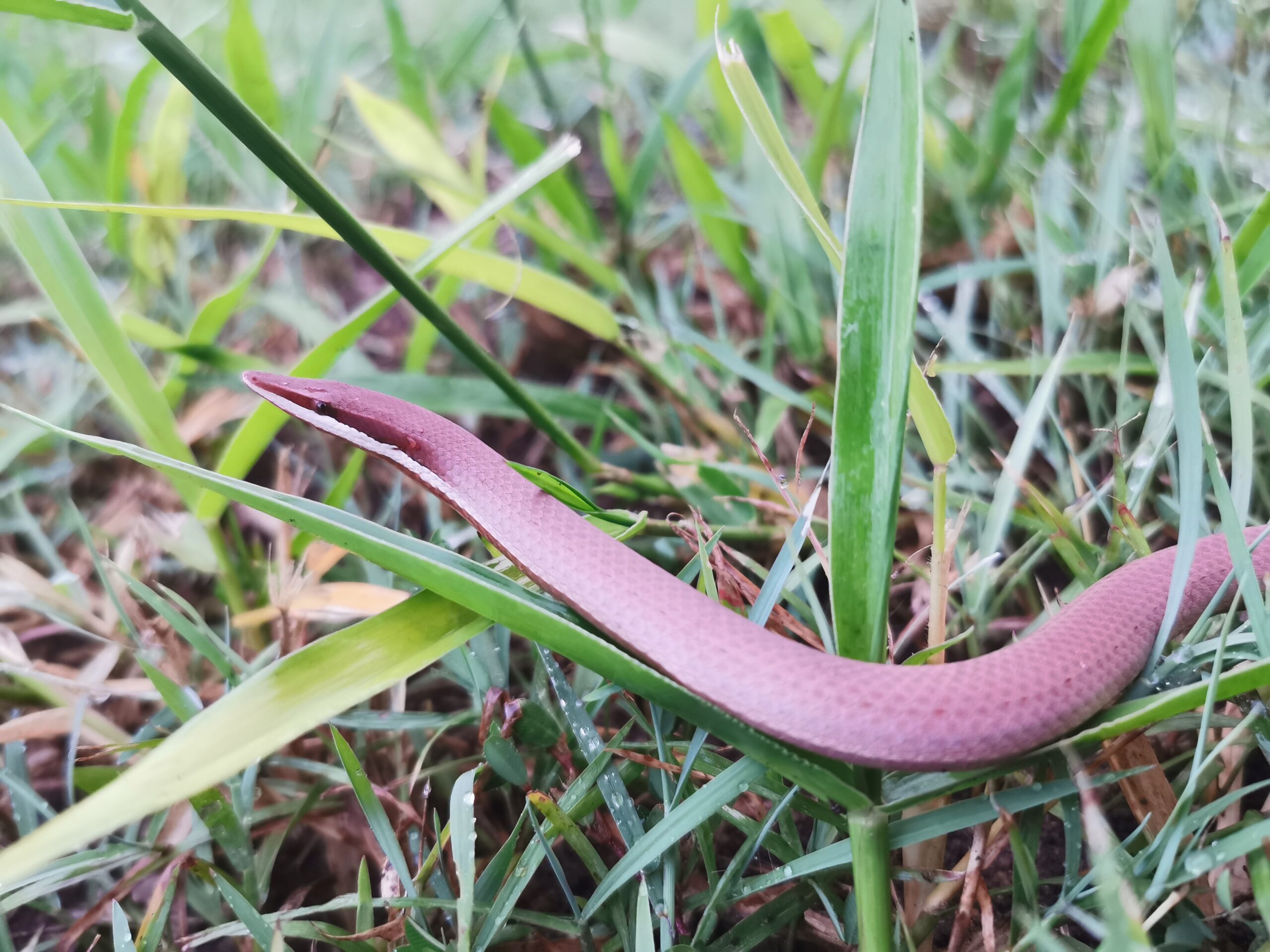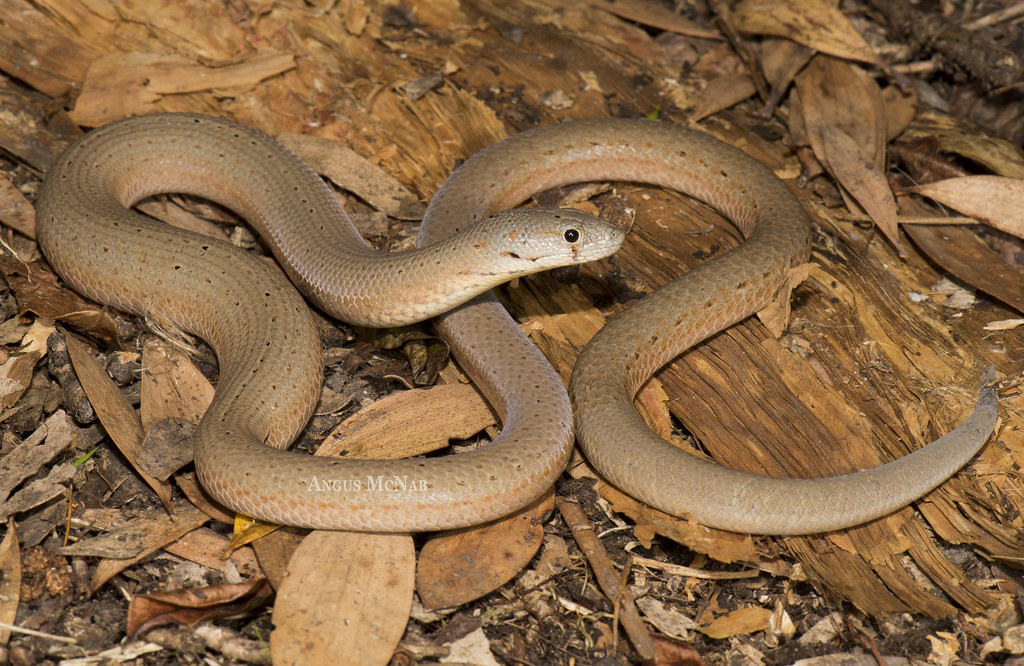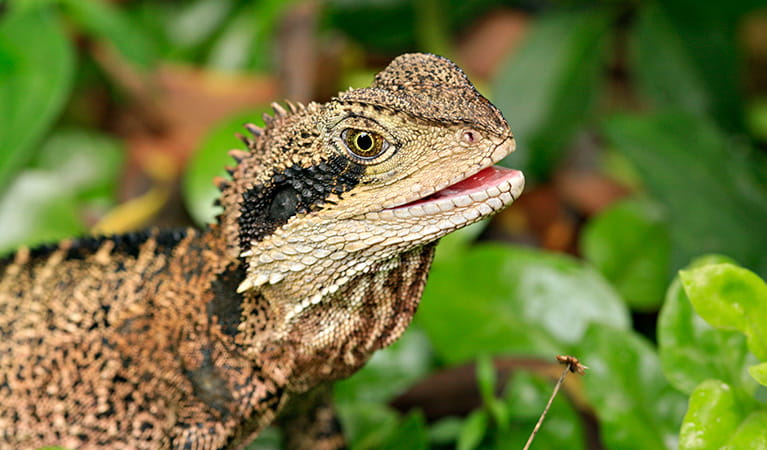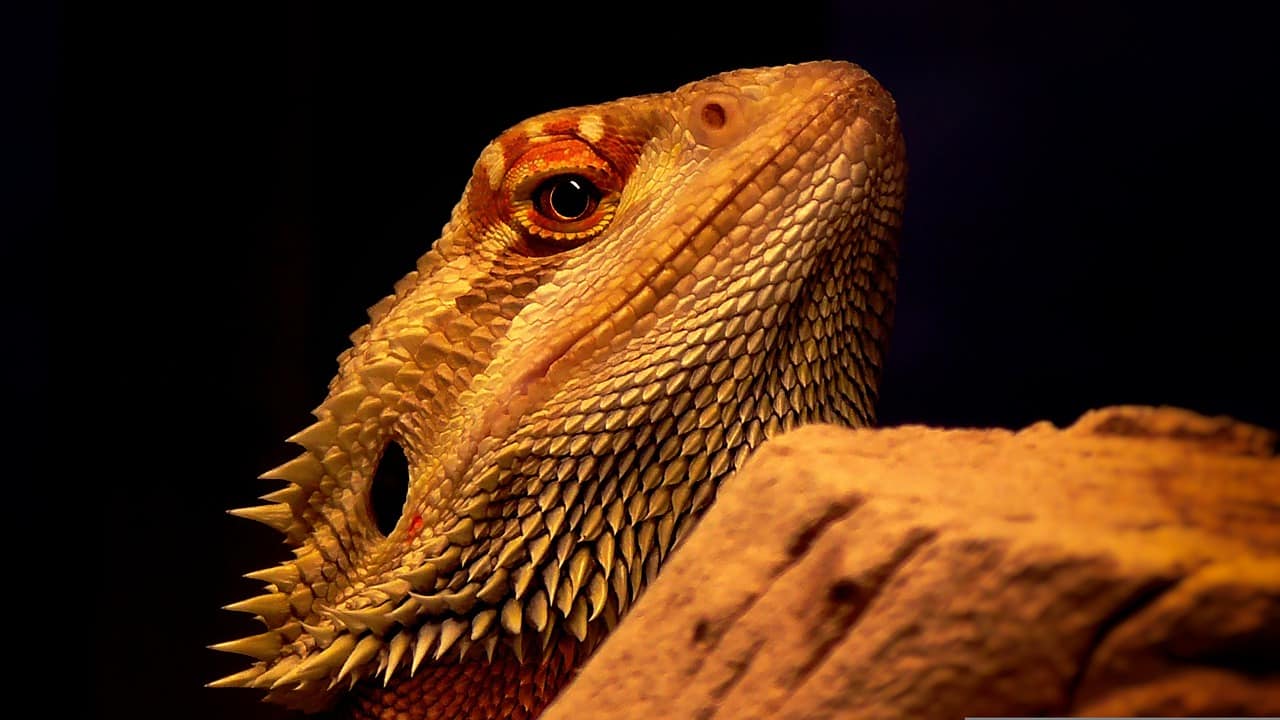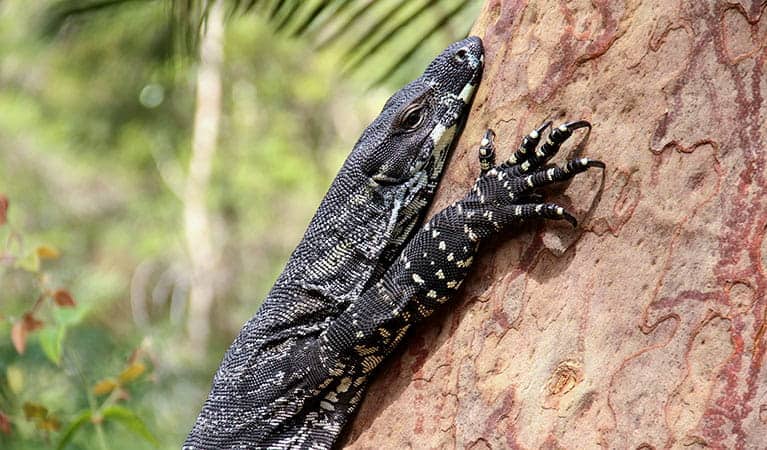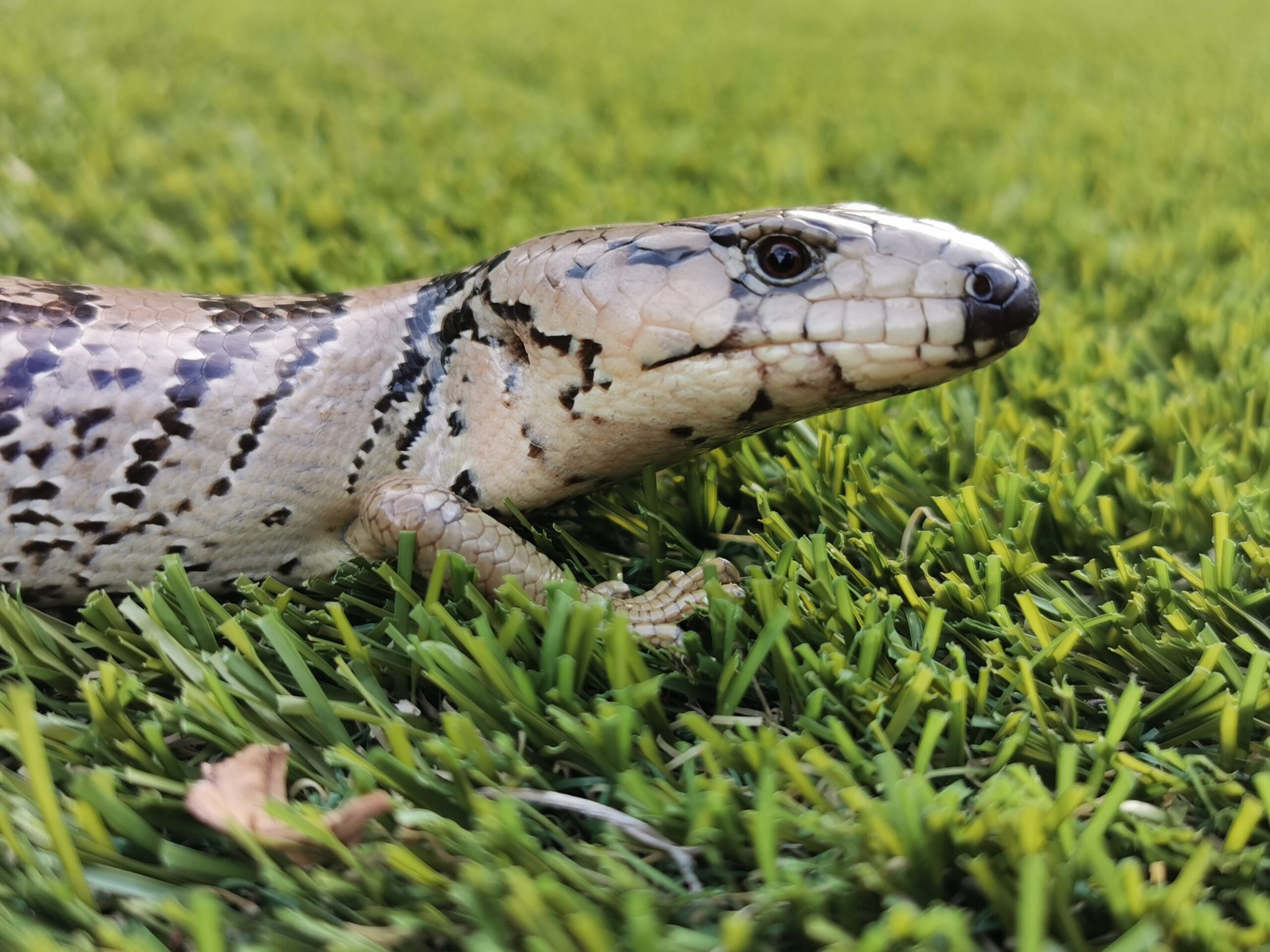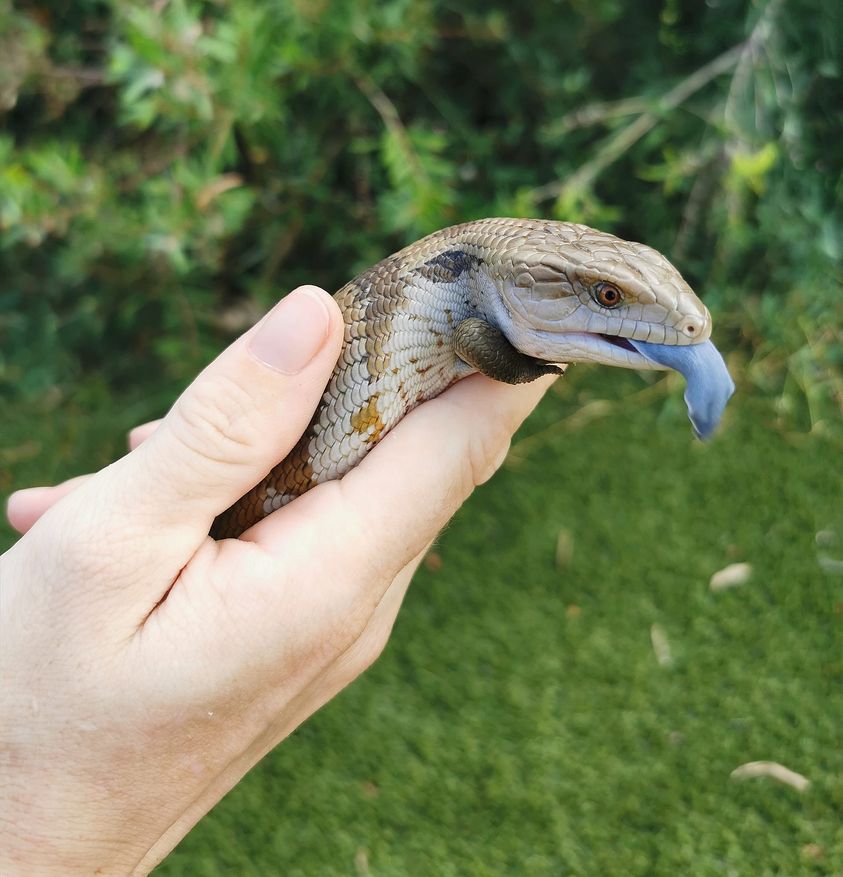
Blue-Tongued Lizard (Tiliqua scincoides)
- Non-Venomous
Stout and non-threatening looking, the eastern blue-tongued lizard has a short body with short appendages. Growing up to 60cm and weighing as much as 1kg as an adult, this reptile is a member of the skink family. Their tails are quite short as well, giving this lizard an overall stocky appearance.
As their name suggests, they have bright blue tongues!
As their name suggests, they have bright blue tongues!

